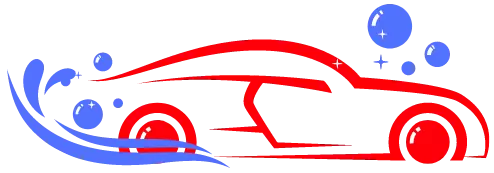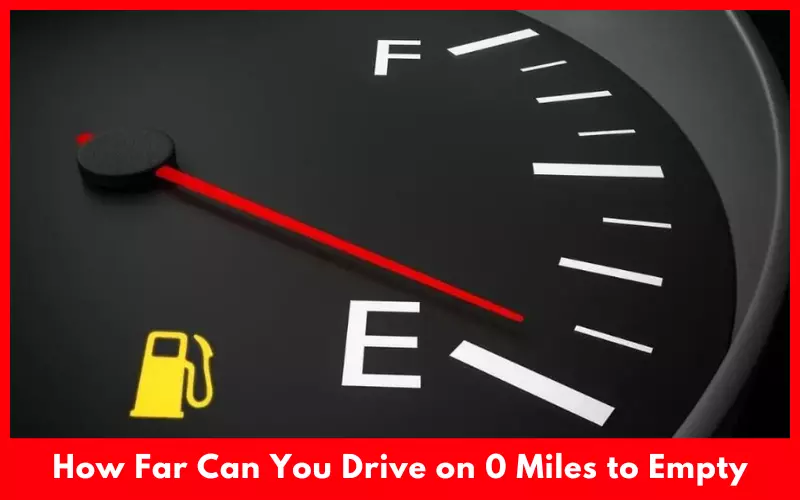Is your car showing 0 miles to empty light and you have no other way than keep driving? Want to know how far can you drive on 0 miles to empty so you can determine if you can reach the gas station or not?
You can expect to drive around 30 to 50 miles with this error light only if you drive slowly on flat terrain and deactivate unnecessary devices. While keep driving with an empty tank can damage the engine severely, you should try to reach the nearest gas station or call a friend or 911 for help if trapped. Let’s gets detail.
Article Summary
How Far Can You Drive on 0 Miles To Empty Tank?
It completely depends on your vehicle, driving style, weather, car’s weight and terrain. However, most past and present vehicles can go 30 to 50 miles or up to 60 miles on 0 miles to empty. You shouldn’t bet on how far you can drive on 0 miles to empty and it isn’t recommended.
You should have received a low fuel indicator light a long time ago before the car displayed the 0 to empty massage. So you had enough time to refill the tank.

There is also no way to accurately determine the distance your car can go past the 0 warning light. The range indicator of your car only shows the approximate estimate that your car can travel using the remaining fuel. If you try to pass the warning limit, it can burn your expensive electric fuel pump due to sucking air.
Factors That Affect How Far You Can Drive 0 Miles To Empty
Following are some aspects that determine how far you can drive on 0 miles to empty:
1. Weather
Depending on the weather, your car will go shorter or longer than the estimated distance of 0 miles to empty condition. If the weather is nice, you’ll be able to drive longer than expected on lower fuel. But if the temperature is colder, the engine has to work harder to run which will consume more fuel and provide less mileage.
2. Driving Habits
Your driving style determines the speed of fuel consumption. If you drive fast, it’ll burn the gas quickly. When you’ve noticed 0 miles to empty massage, drive slowly to conserve fuel.

3. The car
The fuel consumption largely varies depending on the car’s brand, and model. For example, you can drive your Honda 32 miles with 0 miles to empty light. If you wondering how far can you drive in 0 miles to an empty Honda Civic, you can go 44 miles.
Likewise, you can go 30 to 50 miles on 0 miles to empty driving your Nissan which is 20 miles for SUV.
A Volvo car has a bar-type fuel gauge and an 18.5-gallon tank. When its display shows 0 miles to empty light, you can still go 30 miles or so at 21.5 mpg.
According to the 2022 toyota sienna’s owner’s manual, its fuel light activates when the tank still has 2.7 gallons. It turns on the 0 miles to empty light when the tank has one gallon remaining. You can drive over 40 miles at 36 mpg with the 0 miles to empty light. However, the Toyota rav40 can go up to 70 km on empty.
4. Downhill
If your car already showed 0 miles to empty light, avoid driving on hilly terrain. The reason is that it’ll consume more fuel than driving on flat terrain.
Potential Consequences of Driving in An Empty Tank
It isn’t a good idea to let a car run to empty. Otherwise, it’ll allow the fuel pump to suck up sediment and impurities that can settle out in the bottom and cause these issues:
Clogged Fuel Filter
Collecting sediment, dirt, and debris won’t cause a big issue for a gas tank as it’ll settle to the tank’s bottom. But if you run the car on low gas, these sediments will draw in and clog the fuel filter of the pump. It’ll also reduce the gas flow to the engine.

Damaged Fuel Pump
The fuel pump of a car transfer gasoline to the engine. The longevity of the fuel pump is usually the same as the vehicle. But if you drive your vehicle with an empty tank, it can overheat the pump and can cause expensive repairs. You’ll have to drain and remove the tank to change the faulty pump which will cost around $1000.
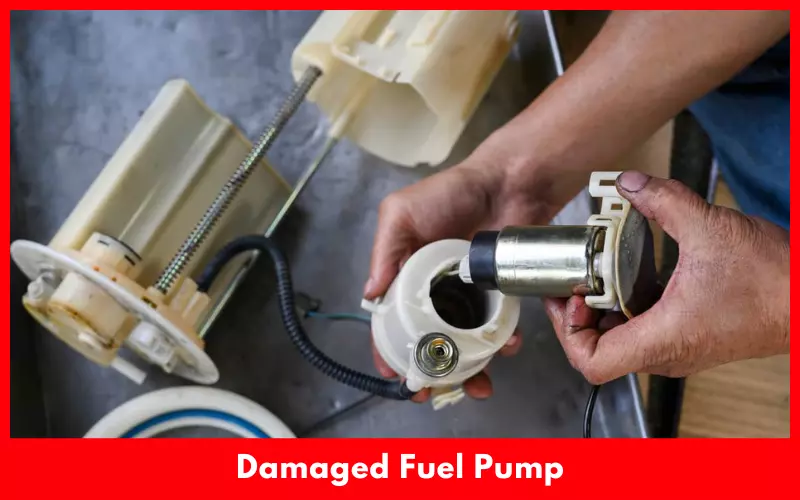
Engine Misfire
Since running an empty car let the fuel pump take in air, the engine doesn’t get enough gas consistently. This can cause an engine misfire, loss of power or vibration while driving.

Damaged Exhaust System
If your car runs out of gas while driving, the car engine can sputter and stall due to starving of fuel. As a result, the exhaust’s catalytic converter can get damaged.
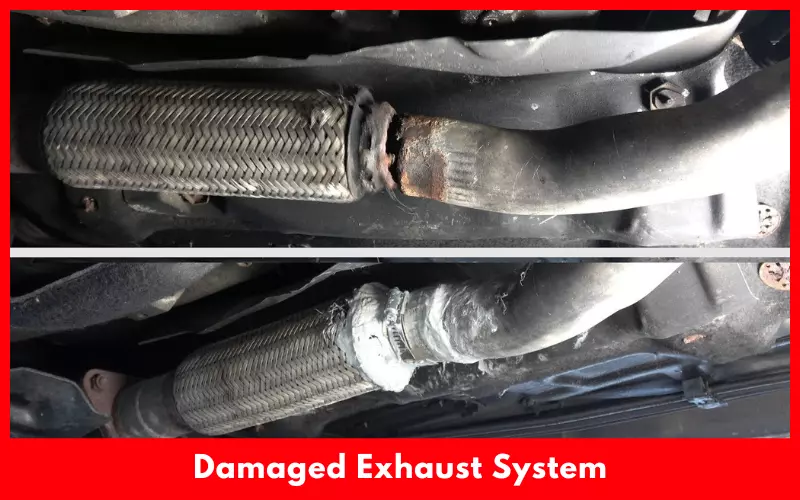
Leave you Trapped
If your car runs out of gas completely, the engine will stall. This can trap you anywhere in the middle of the road near the town or in a remote area. This can put you and other passengers at risk of trouble.
In this case, you should call your friend for help or ask help from other car’s owner to reach the gas station. If your vehicle runs out of gas, push the car to a safe distance from the roadside, and don’t stand outside the car.
However, you can avoid these consequences easily by refilling the gas tank whenever notices low gas signal. Most expert mechanics recommend preventing a car’s fuel level drop under ¼ tanks.
Things To Do When You’re Running Out of Gas
Follow these tips to avoid those consequences:

Drive Slowly
When driving on low fuel, keep the speed between 35 to 45 mph so the engine consumes as low fuel as it can. If you speed up and try to reach the gas station faster, change is you might feel short.
Turn Off the A/C and Other Accessories
Turn off the air conditioning to reduce engine power stress and save fuel. It’ll also deactivate the cabin fan and radiator behind the car which can burn extra fuel unnecessarily. This way you can make the best use of your remaining fuel to reach the gas station.
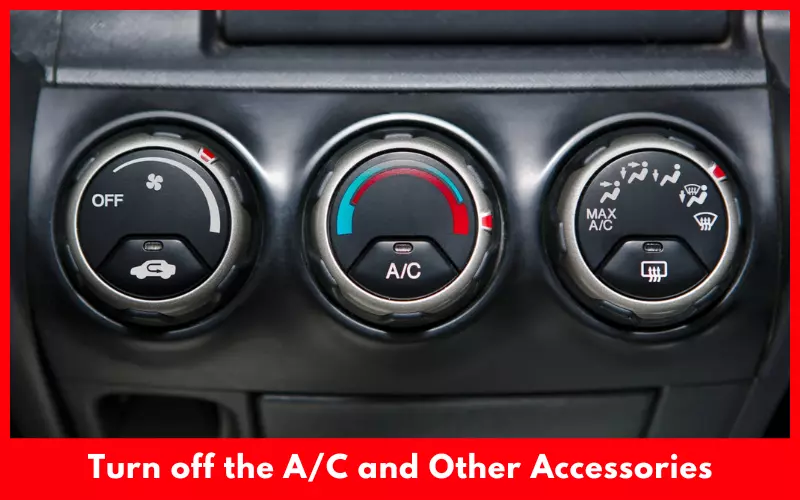
Turn off the electrical device like charging phones and stereos for the same reason. At a time, keep rolling up the window to reduce air resistance in your car.
Find the Gas Station
If your car runs out of gas, firstly, pull over the car. Then find out the nearest gas station using the navigation system of your vehicle or using your smartphone.
Drive Downhill
While navigating, if you find two options, choose the gas station that is on the downhill. Coasting a downhill takes lesser gas compared to climbing a grade. Don’t shift gear into neutral during coasting particularly if you are driving today’s car as it can turn off the fuel injector. Gear fix up into neutral is also wasteful as it takes gas to keep the engine running to avoid losing brakes and power steering.
But what if you run out of gas in a remote area? If your car runs out of gas in an unknown remote area, it’ll be safe for you to wait in the car until help arrives. Stay in the car, turn the hazard light on, and lock the door. If you can’t get a signal on the phone, still you can call 911 for help.
Can You Trust 0 Miles To Empty Gauge on Your Car?
Many of today’s vehicles come with a miles-to-empty gauge that displays the total mile you can drive before your vehicle run out of gas. Some drivers prefer to depend on it instead of the warning fuel light.
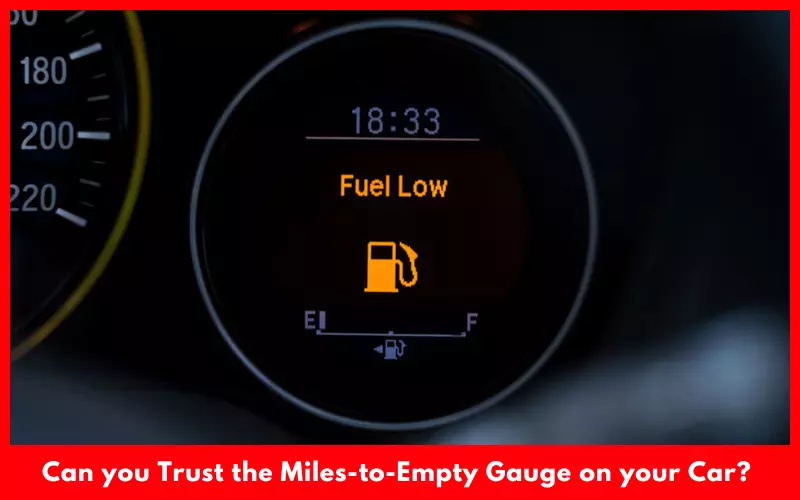
However, you can’t trust the miles to empty the gauge of your car completely. The fuel gauge only provides the remaining fuel’s rough estimate. Though the manufacturer tried to make this system accurate, it can’t count every variable. The manufacturer also tests this device on a new vehicle. So if you install it in a car with 100,000 miles, you might get a different result.
According to the AAA, the miles to empty gauge have a little bit of error ranging from 2.8% to 6.6%. So if you run the vehicle on low fuel, this device may splutter before expectation.
So you should consider an estimate as a guideline instead of set truth. So refill the tank before the gas level drop under ¼ so you don’t need to depend on the estimate and put the engine at risk.
FAQs
How much fuel is left when it says 0 miles?
If your car’s fuel light turns on, there should be an insufficient amount of gas left in the tank. For many cars, the 0 miles to empty light is activated when the tank only has around 10% to 15% gas capacity.
How many km can you drive on 1 liter of gas?
You can apply a formula to determine the number of miles you can drive per liter. The formula is 100 divided by 8. So you can run only 12.5 km per liter.
How do you know exactly how much fuel is left in the tank?
You can read the fuel tank gauge properly to determine the fuel level. The gauge is placed on the tank’s top and it’s a plastic or glass tube marked with numbers like F, ¾, ½, ¼. The float or red marker indicates the amount of fuel left in the tank. If the float is near the gauge’s bottom or isn’t visible, the tank is empty or almost empty.
Final Words
You can’t go very far or more than 50 miles on 0 miles to empty. So, whenever you notice this error message, refill the tank from the nearest gas station and then start the journey.
But if you notice this error message while driving, search for the nearest gas station and follow the tips to reach the station safely. Remember, neglecting the massage can put you in deep trouble and cause worse damage to your car’s engine.
